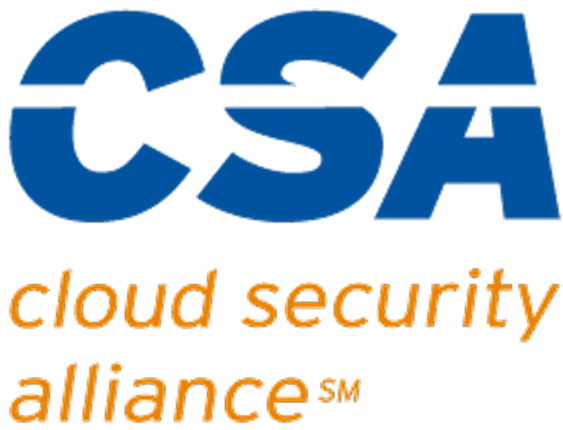Introduction
In the business world, IT is a necessary expense for companies of all sizes. However, this doesn’t mean that IT has to be expensive. In fact, there are several ways to make IT more affordable for your business.
Businesses must invest in hardware, software, and other related products to have a functional IT infrastructure. Additionally, companies must pay for ongoing maintenance and support services to keep their systems running. These costs add up and can significantly impact a company’s operating budget.
Making your business IT more affordable can be a challenge because most businesses have substantial technology needs. However, there are ways to reduce the cost of your technology without sacrificing functionality or quality. Here are some tips for saving money on your business IT:
Evaluate your needs
Evaluate your current technology needs and list what you need to run your business. This will help you identify which technologies are necessary and which can be eliminated or reduced in scope.
Small businesses have different technology needs and requirements than large businesses, but the foundations of IT are essentially the same for businesses of all sizes. Many small businesses are just starting and may run on a tight budget, but need to acquire computers, software, internet access, support services, and more. So, what are the essential pieces of technology that every small business should have?
- Computers: You’ll typically need at least one computer for each employee, plus one for accounting and another for management. You may also want a server to share files and applications if you have more than five employees.
- Software: Operating systems, communications and productivity software, and specialty software for your industry are among the basic requirements for most businesses.
- Internet access: Most small businesses need high-speed internet access to function effectively. You’ll also need a domain name and website hosting to have an online presence.
- Networking: Computers can be interconnected via wired or wireless (WiFi) networks. Wired networking uses cables and is generally the best choice for businesses using their computers near each other. However, it can be expensive per user to create a wired network if you don’t have a large number lot of employees.
- Security and antivirus: You need to have a system to protect your network from outside threats such as viruses, hackers, and even disgruntled employees. At a minimum, this means a firewall or network security, as well as endpoint protection for each user device (desktop, laptop, and mobile device)
- Telephone system: A basic phone system is generally sufficient for a small business. Modern Voice-over-Internet (VoIP) systems typically include interactive voice response (IVR), conference, ring groups, voice mail, and caller ID.
Shop around
Technology can be a huge expense for businesses. To get the best deal on technology, it’s essential to shop around. Compare prices on business technology, and weigh the pros and cons of various pricing models, to get the best deal. For example, purchasing software licenses can require substantial cash outlays, while subscribing to software can lower up-front costs and provide more long-term flexibility. Buying late-model used or renewed equipment can yield significant savings over buying new.
It’s vital to first understand your IT needs to find the best option for your company. Research different IT services and solutions, such as managed services, cloud services, or on-premises solutions. Talk to other business owners about their experiences with various IT services, and weigh the pros and cons of each option. Once you have a good understanding of your business IT needs, you can decide which type of service is best for your company. Consider all the ways those needs can be met – don’t become too fixated on one idea.
One option that businesses may want to consider is free or open-source software. Free and open-source software is software made available to the public at no cost, and it typically has fewer restrictions on its use than other types of software. Businesses that choose to use free or open-source software can save money on licensing fees, and they may also have access to a large pool of developers who can help them customize the software to meet their specific needs. While not all businesses will find free or open-source software suitable for their needs, those that do may find that it offers many benefits over other types of software.
Consider the cloud
When it comes to business IT needs, the cloud should be one of the options you consider. Cloud computing can provide your business with several benefits, including increased flexibility, scalability, and cost savings. Additionally, cloud-based applications can often be accessed from any device with an internet connection, making them perfect for businesses with remote workers.
According to a study by IDC, businesses that switch from on-premises computing and storage to the cloud can save up to 30 percent on their IT costs. That’s because the cloud provider will likely have a more robust and up-to-date infrastructure than most businesses can afford to maintain, and they can offer those services at a lower price.
In addition, businesses that move to the cloud can take advantage of pay-as-you-go pricing models. The result is that companies can avoid being tied down to any one service provider and instead pay a consistent monthly cost for services such as email, data backup, and other IT infrastructure. The cloud also allows businesses to customize their IT infrastructures according to their needs.
Standardize
In the small business world, it’s not unusual to find a heterogeneous IT environment of various brands and vintages of computers, printers, and software attempting to coexist. This can create problems for support and upgrades, as different components may require different patches or updates. The cost of maintaining this mixed infrastructure is typically high and fraught with complications that lead to frustration and lost productivity.
Standardizing the software and devices used throughout the company can help keep IT costs in check. This means using software that is common within an organization and devices that are of the same make and model. Doing so can help avoid the need for multiple licenses, training, and support. It can also lead to cost savings through volume purchasing discounts and streamlined management.
It’s essential to have a clear strategy for managing your IT environment. This includes specifying which brands and models of hardware and software will be used and developing standard procedures for upgrading and supporting them.
Watch your checkbook
Businesses should keep a close eye on their IT spending to identify unexpected or unbudgeted expenses. Unexpected expenses can crop up for various reasons, such as a security breach, a new piece of software that needs to be purchased, or an upgrade to the company’s infrastructure.
If these expenses are not anticipated, they can quickly eat into the business’s budget and cause problems. It is therefore important to be proactive and keep track of all IT-related spending so that any potential issues can be addressed before they cause too much damage. By knowing where money is being spent and what could be trimmed down, businesses can save a lot of money in the long run.
Automate repetitive tasks
In business, time is money, and that’s why automating repetitive tasks can save a lot of both. In today’s digital age, many technological options help businesses automate repetitive tasks and empower their clients for self-service. Technologies like online systems integration tools, online booking systems, and social media marketing automation can save businesses time and money while improving customer satisfaction.
By using web application integration technologies like Zapier or IFTTT, you can connect different systems so that tasks done repeatedly can be automated. This saves time and money and eliminates the potential for human error. Zapier can automate adding newsletter subscribers to your CRM or push CRM data to a billing system when the lead converts to a customer. Zapier has thousands of existing plug-and-play integrations, and you can create your own to extend its functionality significantly.
Online booking systems like Calendly and Koalendar allow customers to book appointments or services online without having to call or visit the business in person. This is an excellent option for busy customers who want to find time slots that work for them without waiting on hold or getting transferred multiple times. Online booking systems integration with popular online calendars such as Google and Microsoft also provide businesses with an easy way to keep track of appointments and manage their resources.
Social media is a powerful tool to reach new customers and grow your brand. But posting updates and managing conversations can be time-consuming. That’s where automation tools like Buffer and Hootsuite come in. These tools allow you to schedule automatic updates and track analytics so that you can focus on other aspects of your business.
Look into outsourcing
Small businesses are always looking for ways to reduce costs and improve efficiency. One way to achieve both goals is to outsource your business’s IT needs. There are many benefits to outsourcing your IT, including improved security, reduced costs, and improved efficiency.
The easiest way to outsource your IT is by signing a support and maintenance contract with an MSP (managed service provider). An MSP will address all of your IT needs, including security, maintenance, and support. Many MSPs can also procure and install hardware such as computers, networking equipment, printers, and phones. MSP can help you improve your business efficiency by providing comprehensive IT solutions for all of your needs. MSPs can also help you reduce costs by providing you with cloud-based solutions. This can be an excellent option for small businesses that don’t have the staff or expertise to manage their own IT department.
Conclusion
Small businesses have unique IT needs that can be difficult to meet while keeping spending in check. Companies need to invest in hardware, software, and other related products if they want their systems to run smoothly. While there are several ways to make your business IT more affordable, finding the right solutions that fit your budget and your specific needs can be challenging. However, by evaluating your current IT infrastructure and expenses, seeking out affordable alternatives to popular software and hardware products, and using cloud-based services instead of on-premises services where advantageous, companies can reduce the cost of technology without sacrificing functionality or quality.




